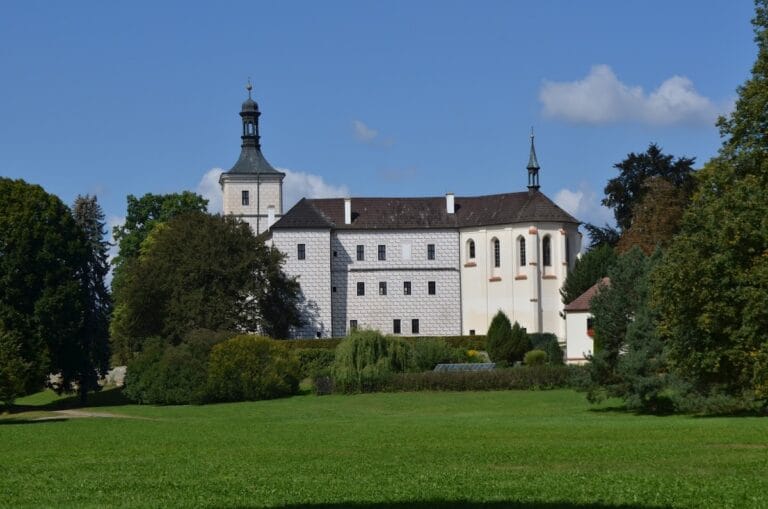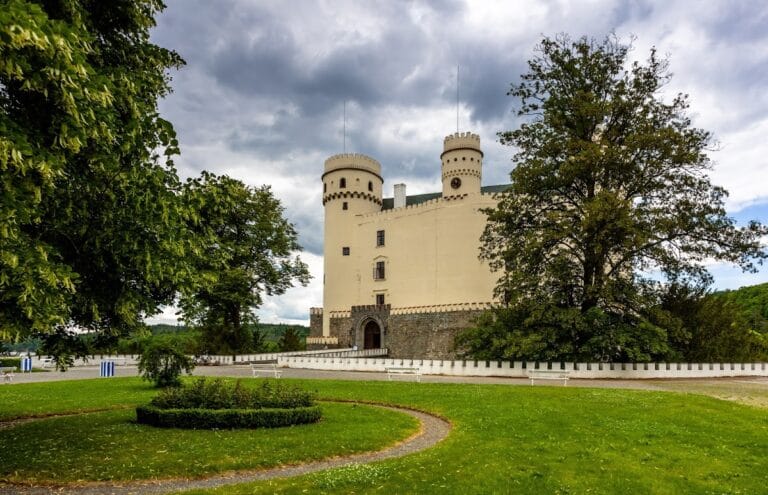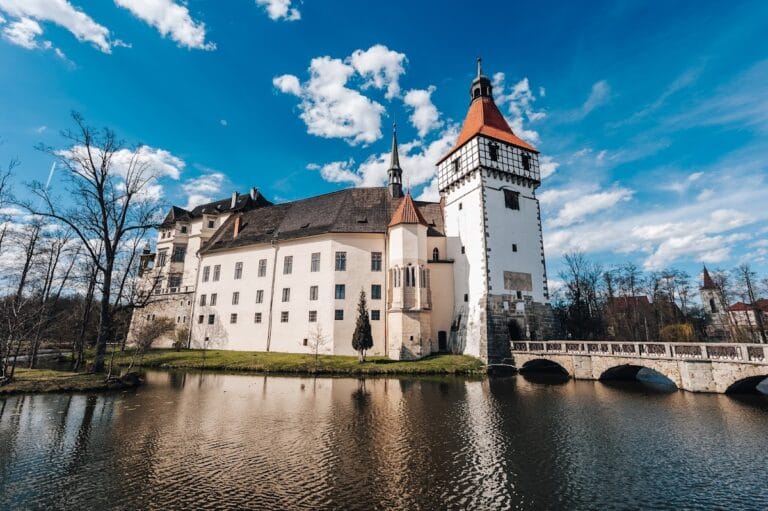Hrochův Hrádek: A Medieval Fortress in the Czech Republic
Visitor Information
Google Rating: 3.9
Popularity: Very Low
Google Maps: View on Google Maps
Country: Czechia
Civilization: Unclassified
Remains: Military
History
Hrochův Hrádek is a ruined fortress situated in the municipality of Březnice-Dobrá Voda in the modern Czech Republic. The site was originally established by early medieval Slavic settlers who constructed a hillfort there, with archaeological evidence showing its use from the 10th to the 13th centuries.
The earliest human presence at the location dates back much further, to the late Iron Age, around the 6th and 5th centuries BCE, near the transition between the Hallstatt and La Tène cultural periods. However, the fortified hilltop itself gained significance in the early Middle Ages. During that time, the hillfort likely operated in conjunction with the nearby Přemyslid administrative castle known as Bozeň, close to Počaply. It is believed to have been the residence of a local high-ranking official overseeing regional matters.
By the end of the 14th century, the site developed into a more substantial stone fortress, although the first surviving written document mentioning Hrochův Hrádek appears only in 1475. This record notes Václav of Švamberk selling the property, which was already abandoned by then. In the late 15th and early 16th centuries, the fortress changed hands multiple times, passing through the ownership of Bohuslav of Němčice, Jan of Pruk, and Zdeslav Ojíř of Očedělice. In 1543, Zdeslav Ojíř sold it to Wenzel Bechinie of Lazan.
According to German historical sources, the fortress’s origins may reach back to the 10th century when it served as a small watch castle guarding the important trade route known as the Golden Trail, which connected Mirovice and Březnice. These accounts also suggest that during the 13th century, the fortress was the seat of a noble named Hroch, from whom the site takes its name.
By the latter half of the 16th century, specifically in 1574, the fortress was recorded as deserted, and it remained attached to the nearby village of Nestrašov. In the 19th century, the ruins underwent partial destruction: in 1875, the southern side of the castle hill, which contained remains of residential buildings, was removed to make way for the new Protivín–Zdice railway line. Later, recognizing its historical value, the site has been officially protected as a cultural monument since 1965.
Remains
The site of Hrochův Hrádek encompasses the remains of an early medieval fortification and a later stone fortress built on a hill rising to 455 meters above sea level, overlooking the Skalica River. The earliest fortification took the form of an earthwork rampart encircling roughly 1.1 hectares on a modest promontory. This rampart, composed of piled earth, rises as much as three meters high on the eastern side, which was the most accessible approach to the hillfort. To reinforce this natural defense, an external ditch was cut in front of the rampart. Portions of these ancient earthworks survive today, although some areas were altered or damaged during the construction of the nearby railway in the 19th century.
The later medieval fortress constructed in the 13th or 14th century included a residential castle that incorporated part of the older fortifications on its western side. The dominant remaining structure today is the northern segment of the castle’s main tower, or donjon, standing preserved up to the level of its third floor. This tower was built using traditional masonry techniques common in the Middle Ages, designed for both defense and habitation.
Inside the tower, wooden beams supported the ceilings separating each floor. The ground floor and the first floor were divided into two rooms each, illuminated by narrow slit windows typical of military architecture, allowing light while minimizing vulnerability. On the second floor, there was a larger chamber featuring a window with an integrated seat and access to a latrine, providing basic sanitary facilities within the stronghold. The third floor retains the corbel of a fireplace, indicating the presence of heating for the occupants.
Remains of the older earth ramparts can still be seen on the castle hill, marking the location of the early medieval fortification that predated the stone castle. The ruin lies immediately next to the Protivín–Zdice railway line on the village’s eastern edge, with the various fragments of walls and earthworks still visible in situ. These preserved elements bear witness to both the early medieval settlement and the later fortress modifications that developed over several centuries of occupation and eventual abandonment.







